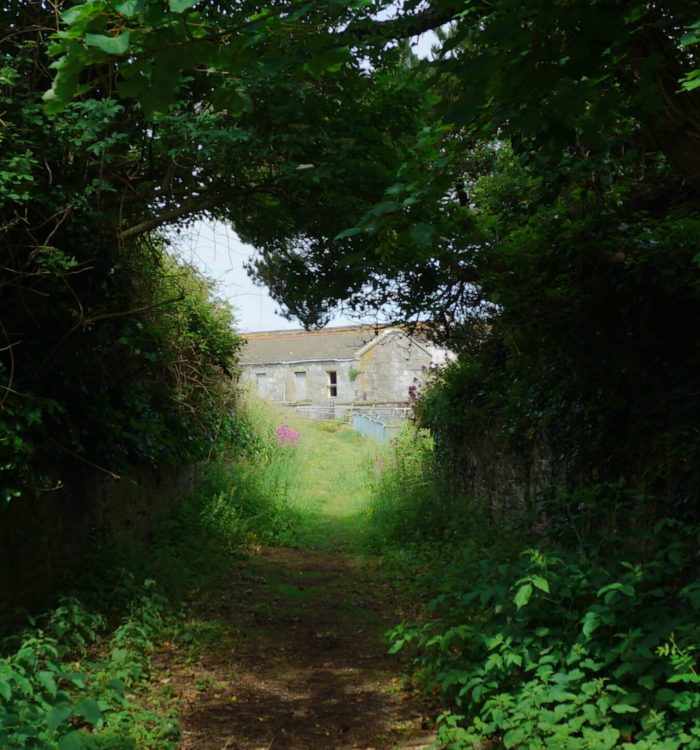THE HISTORY OF
DRAKE’S ISLAND

The reign of Henry I saw the first mention of a building, a chapel, on the Island in 1135 although it was probably built earlier. The Island gained importance as a strategic defensive point in defending Plymouth when Henry VIII developed the English cannon industry which gave guns the range and power to sink enemy ships.
In 1549 the Island was a refuge for Protestants during the Western or Prayer Book uprising and subsequently became a fort when the chapel was demolished and its stone recycled to construct Tudor Artillery Towers in 1550.
In 1642 the English Civil War broke out between the supporters of the King and Parliament and the Island played a key role in helping Plymouth which had declared for parliament withstand a 4 year Royalist siege.
After the Restoration in 1660 Charles II used the Island as a state prison for 25 years housing a couple of parliamentary military commanders and local non-conformist ministers whilst it maintained its role as a fort.
Just before Capt Cook’s second circumnavigation of the World in 1772 the Island was used briefly as an observatory and played a role in successfully testing the first sea chronometers which solved the problem of determining longitude at sea.
A major update of the defences occurred in 1860 with the building of the Palmerston casemates for Drake’s Battery. These housed technologically advanced guns with the power to sink the new Ironclad Battleships. Further advances in technology to breech-loading guns led to more defence.
The Palmerston defences were soon obsolete and a new line of nine gun emplacements to take the newly developed breech-loading guns were built between 1898 and 1901. The 1800s was a lively period on the Island with 34 recorded births between 1812 and 1897, a drunken duel, an attempt at Brandy smuggling and a mutiny by some of the Garrison amongst other incidents!! The breech-loading guns defended Devonport during World War One and the early part of World War Two. In 1943 two new gun emplacements were built to upgrade the defences.
The military handed back the Island to the Duchy of Cornwall in 1961. Not long after a lease was granted by the Duchy to allow an Adventure Centre to be established on the Island. This ran from 1963 until 1989 and saw the first water supply pipe electric cable laid from Devil’s Point to connect to the mains supplies. The Centre was home to an 11 year old JFK Jr for two weeks in 1971 when he learnt to sail in the Sound. The Adventure Centre also greened the Island planting the majority of the trees and wildflowers that can be seen on the Island today. In turn they provide a habitat for insects and the small songbirds we have on the Island. We also get ground-nesting Candian Geese and Mallard Ducks from March to June with Cormorants, Grey Herons and Oyster Catchers amongst the Marine Birds that inhabit the rocks around the Island.
When the Centre closed in 1989 the Island was put for sale by the Duchy and eventually bought by local businessman and one time Plymouth Argyle Chairman Dan McCauley in 1996. Planning Permission was finally granted in 2017. Royal Navy Veteran and local businessman Morgan Phillips bought the Island in 2019 and is the current owner and custodian of the Island. Morgan has managed to get parts of the Island opened for guided tours and we have hosted schools and university field trips as well.
ENDURING MYSTERIES

AND MUCH MORE…
Although mainly an Island of fortifications there was science on the Island, Richard Bayley from the Royal Greenwich Observatory took his readings from the top of the Island and Mathias Dunn a local marine expert wrote many papers in the late 1800’s and early 1900’s on the wildlife in the Sound including why the local crab and lobster industry collapsed in the early 1900’s due to the overfishing of conger eels.
There are also the enduring mysteries and myths surrounding the Island. The tunnels to the mainland, did they ever exist? The prison, where was it? Was there an Oubliette? Why was it called St Michael’s and then St Nicholas Island before Drake’s Island? When did it start being called Drake’s Island? How did they get the guns on the Island? Did the guns ever fire at enemy ships? Did the Council ever own the Island? To find out more please visit historyofdrakesisland.co.uk
ENDURING MYSTERIES

AND MUCH MORE…
Although mainly an Island of fortifications there was science on the Island, Richard Bayley from the Royal Greenwich Observatory took his readings from the top of the Island and Mathias Dunn a local marine expert wrote many papers in the late 1800’s and early 1900’s on the wildlife in the Sound including why the local crab and lobster industry collapsed in the early 1900’s due to the overfishing of conger eels.
There are also the enduring mysteries and myths surrounding the Island. The tunnels to the mainland, did they ever exist? The prison, where was it? Was there an Oubliette? Why was it called St Michael’s and then St Nicholas Island before Drake’s Island? When did it start being called Drake’s Island? How did they get the guns on the Island? Did the guns ever fire at enemy ships? Did the Council ever own the Island? To find out more please visit historyofdrakesisland.co.uk